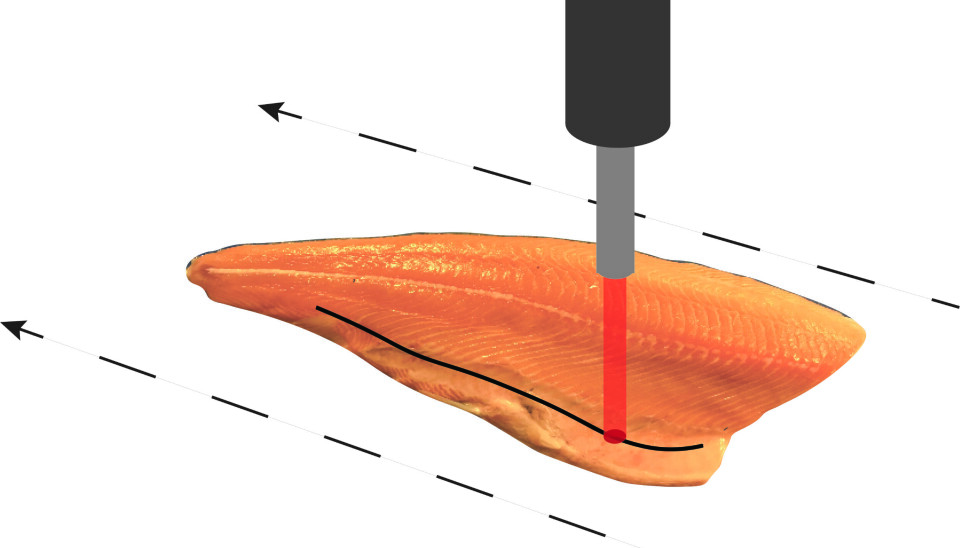Share your science:

Fatty acid composition in the salmon fillet can be measured in seconds
SHARE YOUR SCIENCE: Norwegian farmed salmon is a good source of the healthy fatty acids, found in fatty fish.
Norwegian farmed salmon is a good source of the healthy fatty acids EPA (eicosapentaenoic acid) and DHA (docosahexaenoic acid), found in fatty fish. This is despite the fact that the content of these fatty acids has decreased in recent years because a significant proportion of the marine proteins and oils in fish feed has been replaced with plant protein and plant oils.
The EPA and DHA fatty acids have a number of positive health effects on humans, and we are recommended to consume these daily to prevent cardiovascular diseases. For the farmed salmon themselves, it is also important to have sufficient EPA and DHA in the feed, in order for it to stay healthy.
The measurements will be of great value
The importance of these fatty acids is the reason why we need to be able to measure and document the amount of them in salmon.
There are several reasons why such measurements are useful:
- The industry can document the effect of feed and feed ingredients on the level of EPA and DHA in fish fillets
- This is an important quality characteristic that can be documented in the market and to consumers
- EPA and DHA are important markers in breeding and genetics. Many research projects within the fields of feed, nutrition and fish health require such measurements.
Current measurement methods are costly and time-consuming
Currently, time-consuming separation techniques (chromatography) must be used to measure specific fatty acids. It is both expensive and time-consuming and must be carried out in specific laboratories.
In recent years, Nofima has worked to develop a rapid and non-destructive method for measuring the proportion of EPA and DHA fatty acids in salmon fat. The method can be used on whole salmon fillets without physically touching them, and the measurement only takes a few seconds per fillet.
The results so far are very promising, and we believe that the methodology will help the food industry ensure consistent quality and less waste in their processes.
We have studied and evaluated the two techniques Raman spectroscopy and imaging near-infrared (NIR) spectroscopy.
Raman spectroscopy produced promising results
This technique can, within a few seconds, measure the amount of EPA and DHA. This is done by a laser illuminating the salmon fillet, which can then be scanned quickly without any kind of physical contact.
We have tested the method on salmon from a number of different farms that have received different feed, and it turns out to be very accurate. EPA+DHA can be measured with an accuracy of approximately 0.5 per cent of total fat. The typical variation range for EPA+DHA in salmon is 4-12 per cent of total fat.
As of today, the method is excellent at making rapid measurements in a laboratory or next to the line in a production facility. In the slightly longer term, we envisage that Raman can also be put directly on the production line and measure each and every salmon fillet, but this might require robotic controlled measurements.
Relevant Raman measurement systems currently cost approximately NOK 700,000. This cost must be assessed against the opportunities it can provide for effective documentation and quality sorting.
Raman has mostly been used in laboratories or next to the production line. In the Digifoods research centre, we are developing the technology so that it can be used for continuous measurements of food directly on the production lines. The results so far are very promising, and we believe that the methodology will help the food industry ensure consistent quality and less waste in their processes.
In addition, we collaborating with geneticists to find out whether the methodology can be used directly in breeding work to select fish with the desired fat composition.
NIR imaging spectroscopy
NIR imaging (hyperspectral) spectroscopy is already being used by the food industry to make in-line measurements. The method is used for measuring parameters such as fat in salmon fillets, fat in meat, protein in chicken fillets, as well as residual blood in whole white fish and salmon fillets.
We know that NIR imaging is very good at measuring total fat content, but there has been more uncertainty as to whether it can also be used for specific fatty acids such as EPA and DHA.
The studies show that the method is not as accurate as Raman, but good estimates are also obtained using this technique. One advantage of using NIR imaging is that the technology is faster than Raman, and very suitable for taking measurements directly at production lines.
FURTHER READING:
Share your science or have an opinion in the Researchers' zone
The ScienceNorway Researchers' zone consists of opinions, blogs and popular science pieces written by researchers and scientists from or based in Norway.
Want to contribute? Send us an email!






























